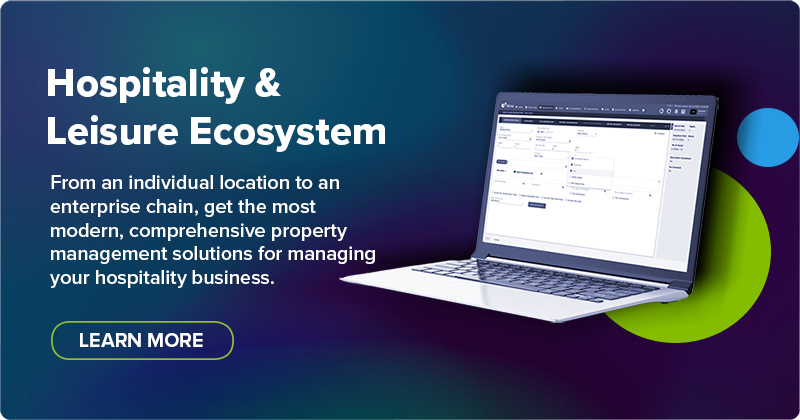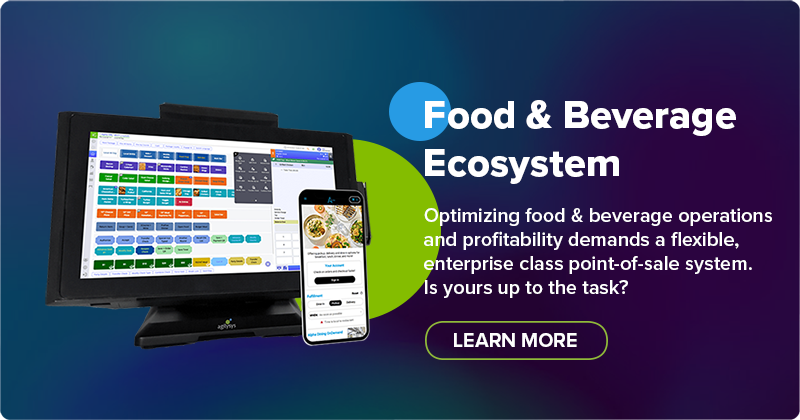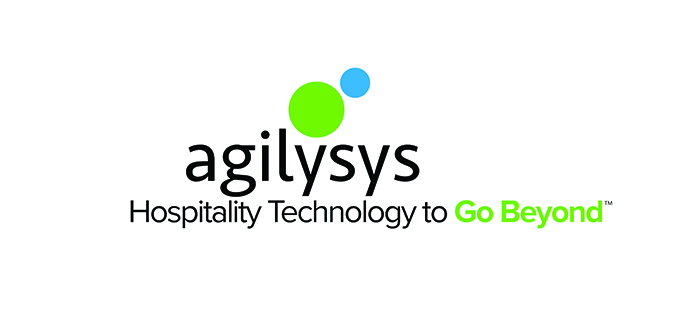
- Solutions
- Food & Beverage Ecosystem
Food & Beverage Ecosystem
Optimizing food & beverage operations and profitability demands a flexible, enterprise-class point-of-sale system. Is yours up to the task?
Go- Hospitality & Leisure Ecosystem
Hospitality & Leisure Ecosystem
From an individual location to an enterprise chain, get the most modern, mobile solution for managing your hospitality business
Go
- Inventory & Procurement Ecosystem
Inventory & Procurement Ecosystem
Designed to optimize foodservice and retail inventory and procurement operations for hotels, resorts, universities, restaurants and others.
Go
- Professional Services
Professional Services
Hospitality businesses are global, 24/7 operations with complex technology demands. You don’t have to go it alone.
Go
- Solution Studios
- Hotels
Hotels
Whether you operate a single boutique location or a large hotel chain, there’s an Agilysys hotel solution for you.
Go- Resorts
Resorts
Whether you operate a single boutique location or a large complex resort, your property is a unique operation that requires robust solutions supported by an experienced technology partner
Go
- Casinos
Casinos
You’re more than a gaming operation. You’re a full-service casino resort property and success isn’t about playing the odds, it’s about making the most of every revenue opportunity.
Go
- Tribal Gaming
Tribal Gaming
A leader in casino hospitality management solutions who respects the sovereignty of your nation.
Go
- Cruise Lines
Cruise Lines
Smooth seas ahead: technology solutions from Agilysys, a leader in cruise management systems.
Go
- Higher Education
- Corporate Dining
Corporate Dining
Identify emerging dining trends while aligning coverage with demand and capturing more revenue.
Go
- Healthcare
Healthcare
Delight patients & visitors, retain staff and grow margins with a suite of hospitality solutions for healthcare environments.
Go
- Life Plan Communities
- Foodservice Management
Foodservice Management
End-to-end foodservice management software solutions for optimum productivity and profitability.
Go
- Stadiums
- Restaurants
- Airports
Airports
Optimizing dozens of food & beverage outlets throughout your facility demands world-class POS performance combined with real-time operating insights.
Go
- Resorts
- Resources
- Articles
Articles
Access our library and read about the latest in emerging technology and other hospitality trends. Find tips and insights on accelerating business growth and improving guest satisfaction.
Go- Customer Stories
Customer Stories
Learn why so many businesses, small and large, partner with Agilysys for their hospitality technology needs.
Go
- Customer Videos
Customer Videos
Watch and learn what Agilysys customers have to say about their experiences with our solutions.
Go
- Product Resources
Product Resources
An in-depth collection of product information and datasheets. Read about the latest in hospitality technology features designed to solve the challenges faced by hospitality professionals around the globe.
Go
- Product Showcase
Product Showcase
Hear from industry professionals about the latest advancements, including tips and tricks, in hospitality and emerging technologies. Check out the library of demo videos and webinar recordings.
Go
- Webinars
Webinars
Watch and learn about the latest in successful technology trends and hear from hospitality professionals in this selection of interactive videos.
Go
- Industry Reports
Industry Reports
Important research and studies from across the hospitality industry. Find out what thought leaders are saying.
Go
- Customer Stories
- Company
- Leadership
- Solution Partners
Solution Partners
Agilysys has a broad collection of partners and APIs to help you assemble the perfect solution for you.
Go
- Our Customers
Our Customers
Discover how Agilysys customers like you are using our solutions to improve their business and guest experience.
Go
- Investor Relations
- News
- Events
Events
With the Agilysys commitment to 100% Hospitality solutions, we take industry events and conferences seriously. Please see where you can find Agilysys to learn more.
Go
- Career
- FAQS
FAQS
Go
- Solution Partners
- Support
- Contact Support
- Microsoft Patch Testing
Microsoft Patch Testing
See what Microsoft products and versions are currently support by Agilysys.
Go
- Payment Center
- RMA Requests
- Supply Order
Supply Order
Go
- Hospitality IQ
Hospitality IQ
Go
- Knowledge Center
Knowledge Center
Go
- Microsoft Patch Testing
- Blogs
- MyAgilysys
-
 Get a Demo
Get a Demo 877 369 6208
877 369 6208
×Home
☰- Explore
WHAT'S THE BUZZ IN HOSPITALITY?
How Much Does a Restaurant POS System Cost?
Investing in a point-of-sale (POS) system is a crucial step for any restaurant, as it helps streamline operations, improve customer service, and increase efficiency. However, the cost of a restaurant POS system can vary significantly depending on several factors, including the features you need, the size of your establishment, and whether you choose a cloud-based or traditional system. In this article, we'll explore the key components that influence the cost of a restaurant POS system and help you determine what to expect when budgeting for this essential tool.
1. Hardware Costs
The hardware required for a POS system includes items like terminals, cash drawers, receipt printers, barcode scanners, and kitchen display systems (KDS). The cost of hardware can range from a few hundred to several thousand dollars, depending on the quality and quantity needed. For example:
- POS Terminals: Basic terminals can cost around $300 to $1,000 each, while high-end models with advanced features can go up to $2,500 or more.
- Receipt Printers: These typically range from $150 to $500.
- Barcode Scanners: A good quality scanner can cost between $100 and $300.
- Cash Drawers: Prices can vary from $100 to $300, depending on the build quality.
- Kitchen Display Systems (KDS): A KDS can range from $500 to $2,000, depending on the complexity and features.

Restaurants that need multiple terminals or additional hardware for kitchen management and inventory tracking will see higher initial costs.
2. Software Costs
The software is the heart of the POS system and includes features for order management, payment processing, inventory control, and customer relationship management (CRM). The cost of POS software can vary depending on whether you opt for a cloud-based or on-premise solution:
- Cloud-Based POS Systems: These are typically subscription-based, with monthly fees ranging from $50 to $300 per terminal. Cloud-based systems are popular due to their accessibility, automatic updates, and lower upfront costs.
- On-Premise POS Systems: These systems often require a one-time purchase fee, which can range from $500 to $2,000 per terminal, with additional costs for software updates and support.
Many POS providers offer tiered pricing based on the features you need, so it’s essential to choose a plan that aligns with your restaurant’s requirements. Additional features like online ordering, loyalty programs, and advanced reporting can increase the cost.
3. Payment Processing Fees
Payment processing fees are a significant part of the overall cost of a POS system, as they apply every time a customer pays with a credit or debit card. These fees typically range from 2% to 3% of each transaction, plus a small per-transaction fee (e.g., $0.10 to $0.30). The total cost will depend on your restaurant’s sales volume and the types of payments you accept.
Some POS providers bundle payment processing services with their systems, while others allow you to choose your payment processor. It’s important to compare rates and ensure you’re getting competitive pricing, as processing fees can add up quickly for high-volume restaurants.
4. Installation and Setup Costs
Setting up a POS system involves more than just plugging in the hardware. It includes installing software, configuring settings, training staff, and integrating the system with other tools like accounting software and online ordering platforms. Installation and setup costs can vary:
- DIY Installation: Some cloud-based POS systems offer simple, user-friendly setups that can be done by the restaurant owner or manager, often at no additional cost.
- Professional Installation: For more complex systems or large establishments, professional installation may be required, costing anywhere from $500 to $2,000, depending on the complexity of the setup.

Training is another essential component of the setup process. While some providers include basic training in the setup fee, others may charge extra for additional training sessions.
5. Maintenance and Support Costs
Ongoing maintenance and support are crucial for keeping your POS system running smoothly. These costs can include:
- Software Updates: Cloud-based systems typically include updates in the subscription fee, while on-premise systems may require paid updates.
- Technical Support: Some POS providers offer free basic support, while others charge a monthly fee for premium support services. This can range from $20 to $100 per month, depending on the level of service.
- Hardware Maintenance: If hardware components fail or need replacement, you’ll need to factor in repair or replacement costs.
It’s essential to choose a POS provider with reliable support, as downtime can lead to lost sales and frustrated customers.
6. Add-Ons and Integrations
Many POS systems offer add-ons and integrations that can enhance functionality but also increase costs. Common add-ons include:
- Online Ordering: Adding online ordering capabilities can cost an additional $30 to $100 per month.
- Loyalty Programs: A loyalty program integration might add $50 to $200 per month, depending on the features.
- Advanced Reporting: Enhanced reporting features can range from $20 to $100 per month.
Integrating your POS system with other software like accounting tools, payroll systems, and reservation platforms can also incur additional costs, either as one-time fees or ongoing subscription charges.

The cost of a restaurant POS system can vary widely based on your specific needs, with total costs ranging from a few hundred to several thousand dollars per month. When budgeting for a POS system, consider the long-term value it will bring to your operations, including improved efficiency, better customer service, and increased sales. By carefully evaluating your options and choosing a system that aligns with your restaurant’s requirements, you can make a smart investment that pays off in the long run.

The 2024 Global Hospitality Study
Download Study
Visit Agilysys At These Events
Learn More
2025 Hospitality Industry Conferences You Shouldn't Miss
Read MoreCategories
- Contact Support
- Leadership
- Articles
- Hotels
- Food & Beverage Ecosystem





